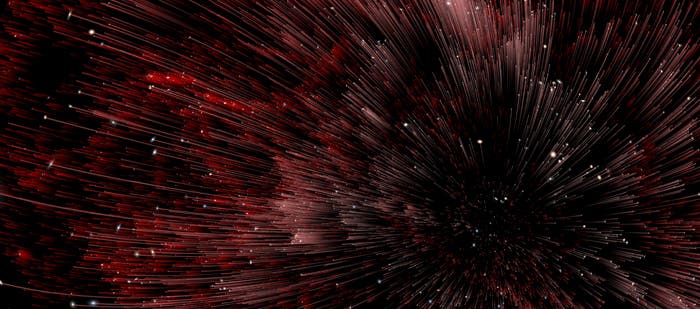Researchers have created a new model that applies our latest understanding of quantum mechanics to Einstein’s theory of general relativity and this is what they came up with – it’s truly hard to wrap your mind around that.
Currently accepted theories state that the Universe is around 13.8 billion years old, and before that everything in existence was squished into a tiny point – also known as the singularity – so incredibly compact that it contained everything that eventually became the Universe (actually, this is pretty hard to wrap your mind as well). As the Big Bang took place, the Universe started to expand, and it is expanding faster and faster to this day.

The problem with current theories is that the math breaks down when you start to analyze what happened during or before the Big Bang.
“The Big Bang singularity is the most serious problem of general relativity because the laws of physics appear to break down there,” co-creator of the new model, Ahmed Farag Ali from Benha University and the Zewail City of Science and Technology, both in Egypt, told Lisa Zyga from Phys.org.
Working in a team which included Sauya Das at the University of Lethbridge in Alberta, he managed to create a new satisfying model in which the Big Bang never occurred, and the Universe simply existed forever.
“In cosmological terms, the scientists explain that the quantum corrections can be thought of as a cosmological constant term (without the need for dark energy) and a radiation term. These terms keep the Universe at a finite size, and therefore give it an infinite age. The terms also make predictions that agree closely with current observations of the cosmological constant and density of the Universe.”
According to this model, the Universe also has no end, which is perhaps even more interesting if you think about it, and that it is filled with a quantum fluid, which might be composed of gravitons – hypothetical particles that have no mass and mediate the force of gravity.
The model shows great promise, but it has to be said – it’s only a mathematical theory at this point. We don’t have the physics to back it up or prove it wrong at the moment, and we likely won’t have it in the near future. Still, it’s remarkable that it solves so many problems at once, and the conclusions are very intriguing.
“It is satisfying to note that such straightforward corrections can potentially resolve so many issues at once,” Das told Zyga.
Read the full study here.






